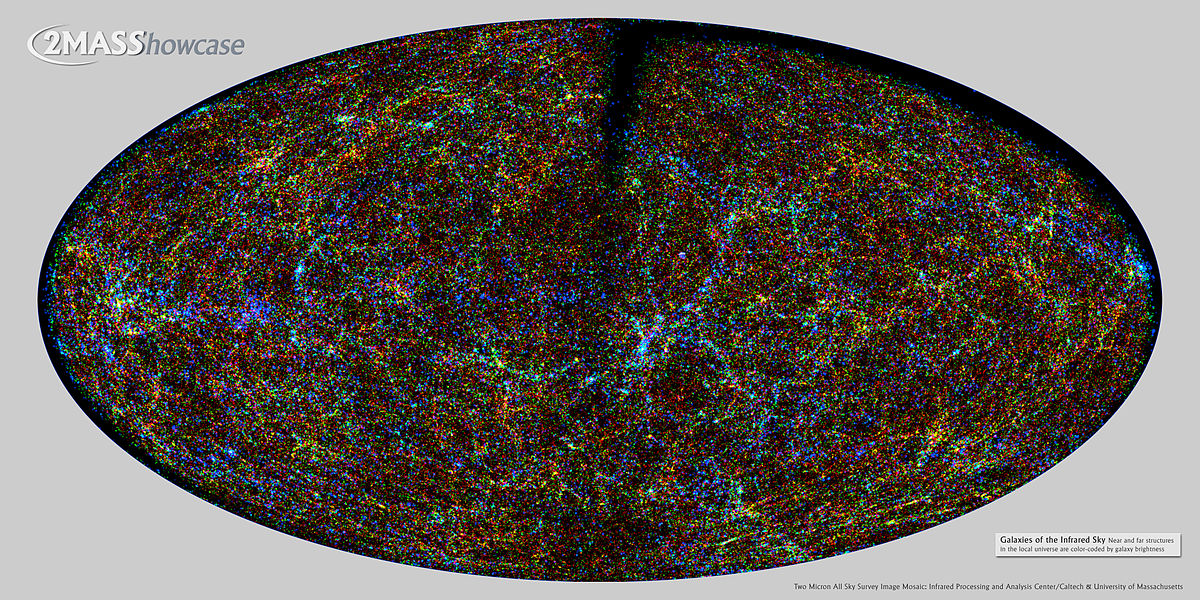The best visual animated model of the universe

The universe is not strictly defined in astronomy and philosophy. It is divided into two fundamentally different entities: speculative (philosophical) and material, available to observations now or in the foreseeable future. If the author distinguishes these entities, then, following tradition, the former is called the Universe, and the second is called the astronomical Universe or the Metagalaxy (recently this term has almost become obsolete). The universe is the subject of cosmology research.
Historically, various words, including equivalents and variants from various languages, such as "space", "world", "heavenly sphere", were used to designate "all space". The term "macrocosmos" was also used, although it is intended to identify large scale systems, including their subsystems and parts. Similarly, the word "microcosm" is used to refer to systems of small scale.
Everything is relative. Cognitive thing.

To zoom in / out, use the mouse wheel or the slider.
For more information, you can click on the object.
The background music is turned on / off by the note icon in the upper right corner.
 Any research, any observation, whether watching a physicist behind how the nucleus of an atom, a child after a cat or an astronomer observing a remote, distant galaxy is split, is all the observation of the universe, or rather, of its individual parts. These parts are the subject of the study of individual sciences, and the universe as large as possible, and even the universe as a whole are engaged in astronomy and cosmology; While the universe is understood to be either the region of the world covered by observations and cosmic experiments, or the object of cosmological extrapolations - the physical universe as a whole.
Any research, any observation, whether watching a physicist behind how the nucleus of an atom, a child after a cat or an astronomer observing a remote, distant galaxy is split, is all the observation of the universe, or rather, of its individual parts. These parts are the subject of the study of individual sciences, and the universe as large as possible, and even the universe as a whole are engaged in astronomy and cosmology; While the universe is understood to be either the region of the world covered by observations and cosmic experiments, or the object of cosmological extrapolations - the physical universe as a whole.
The subject of the article is knowledge about the observed universe as a single whole: observations, their theoretical interpretation and the history of formation.
Among the unambiguously interpreted facts regarding the properties of the universe, we give here the following:
| The most common element is hydrogen. | The expansion of the universe with a good accuracy is linear up to z ~ 0.1 | Relict background fluctuates on scales of the fourth order of smallness. |
| The background temperature depends on z . | The presence of L Alpha- las in the spectra of distant objects (quasars) with z > 6. | The presence of a strong inhomogeneity in the distribution of galaxies at scales of <100 Mpc. |
The theoretical explanations and descriptions of these phenomena are based on the cosmological principle, the essence of which is that observers, on the average, find the same picture, regardless of the place and direction of observation. Theories themselves tend to explain and describe the origin of chemical elements, the course of development and the cause of expansion, the emergence of a large-scale structure.
The first significant push towards modern ideas about the universe was made by Copernicus. The second largest contribution was made by Kepler and Newton. But truly revolutionary changes in our ideas about the universe occur only in the 20th century.
- Unique animated works by Moran Goldstein (55+ pieces)
- Animation about the destruction of objects (15+ pieces)
- Animation about the female body and easy erotic (50+ pieces)
- Animation how our body works (10+ pieces)
- Mathematics on the fingers with hyphae (20+ pieces)
- The best visual animated model of the universe (1 piece)
- Terrible gifki for tickling nerves (100+ pieces)
- Scientific gifki or science is visually (40+ pieces)
- Animated models of weapons (10+ pieces)
- Gifki, who explain the world better than textbooks (Mystery Mechanisms) (100+ pieces)
- Huge collection of positive gifoks on the forum



Comments
When commenting on, remember that the content and tone of your message can hurt the feelings of real people, show respect and tolerance to your interlocutors even if you do not share their opinion, your behavior in the conditions of freedom of expression and anonymity provided by the Internet, changes Not only virtual, but also the real world. All comments are hidden from the index, spam is controlled.